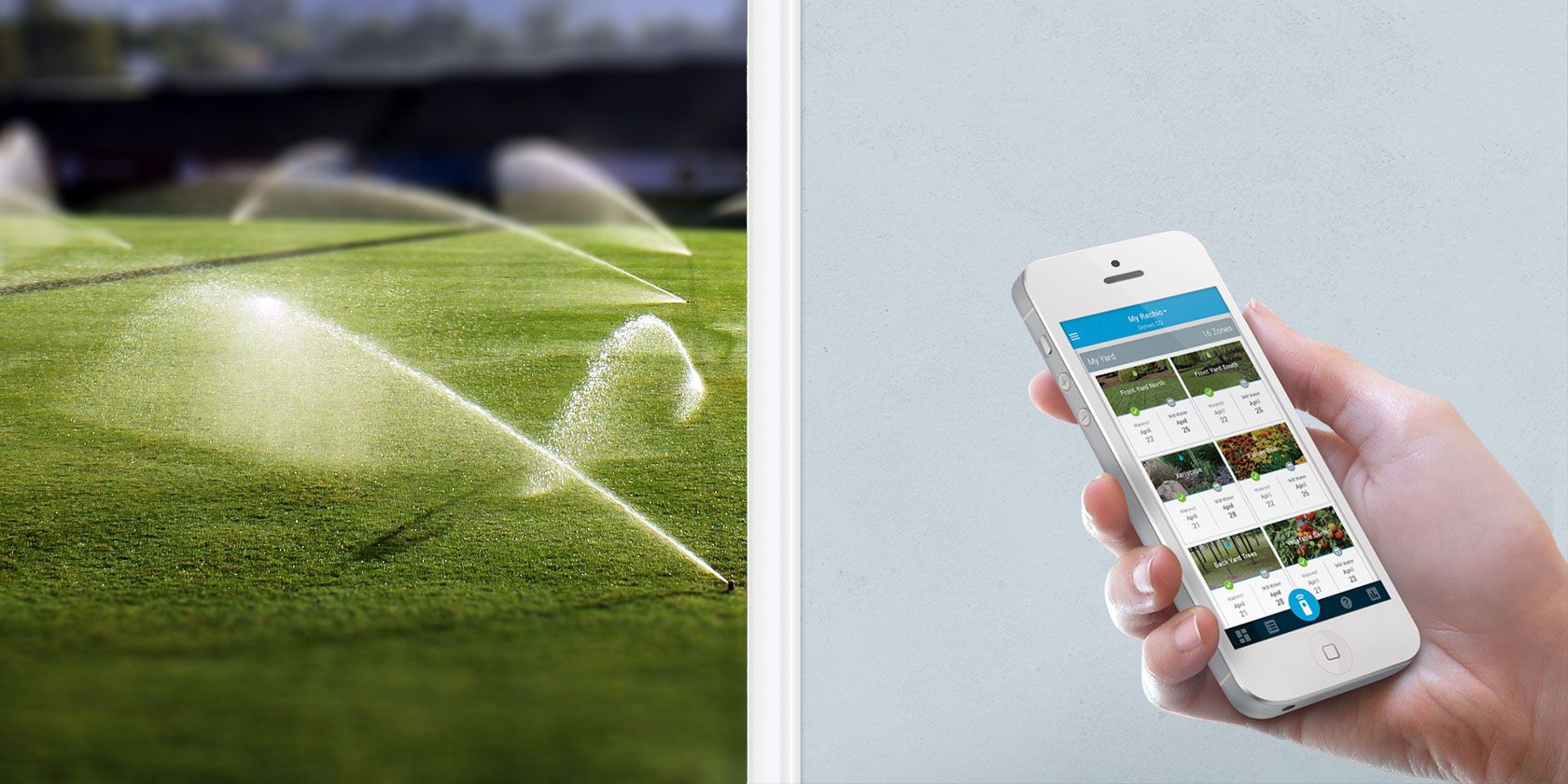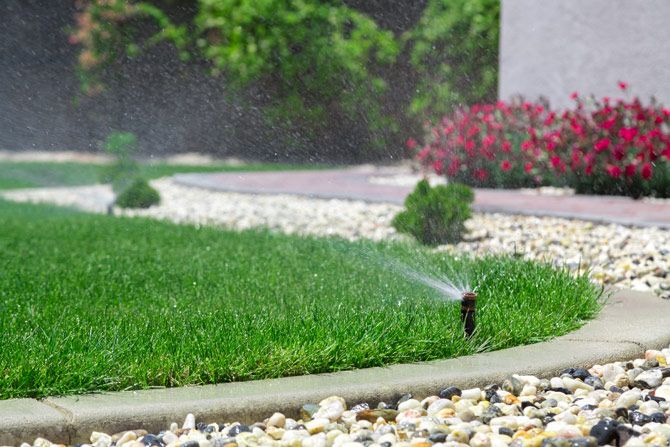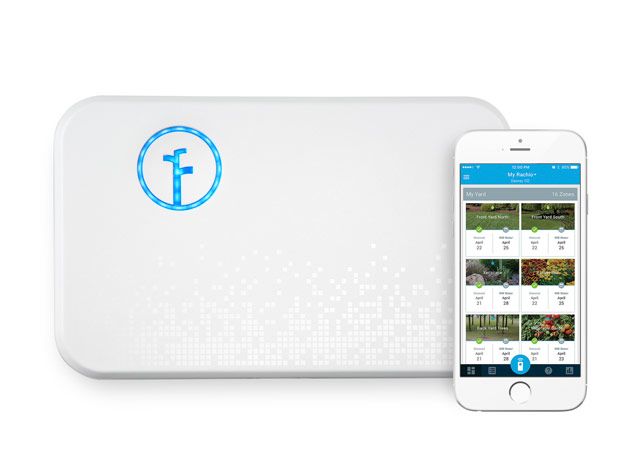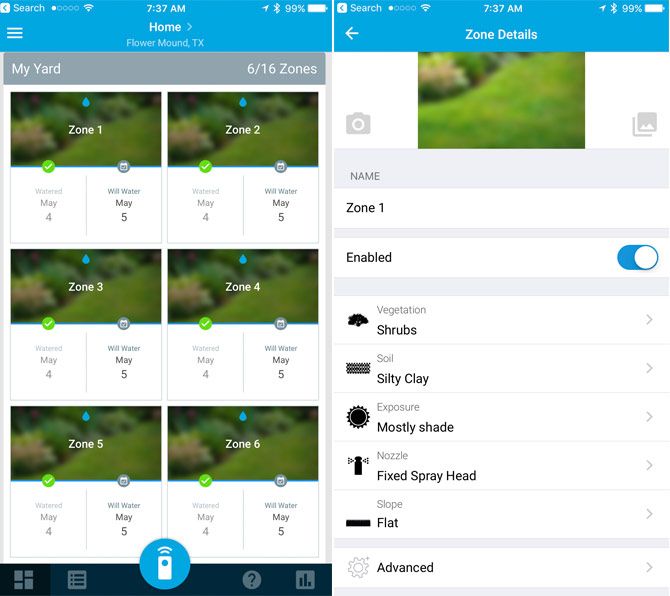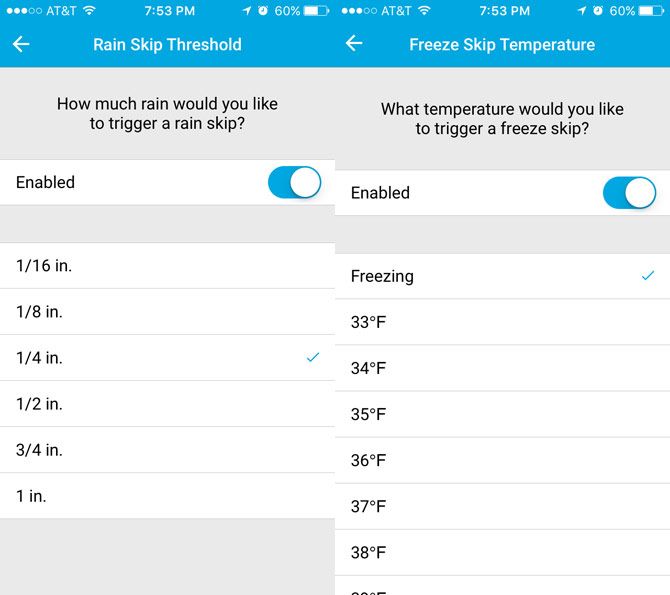Keeping your lawn healthy in the summer takes an amazing amount of water (and cash when the utility bills roll in). If you're fortunate enough to have a sprinkler system, new lawn care technology can help keep your lawn green while saving cash.
Let's take a look at smart sprinkler controllers and see if they are the right solution for you.
What Is a Sprinkler Controller?
If you have any type of irrigation system at home, you're probably familiar with sprinkler controllers. They come in all shapes and sizes, and are often located in a garage or another out-of-the-way location.
All the electrical wires from the different parts of the system converge at the controller. You can set watering programs to determine when your sprinklers are on, and how long each zone is active.
Most controllers look like an old-school VCR with a host of buttons, dials, and a calculator-like screen. That's not exactly what I'd call well-designed or easy to use for anyone used to a smartphone or tablet.
Because of the design, some homeowners don't know how to fine tune their system when needed or how to easily change the watering schedule because of changing seasons or different weather conditions.
Both over-watering or under-watering a lawn can cause problems. Without enough water, a lawn can easily dry up and die, leaving a big yellow patch of dirt in your yard -- not exactly a big help to your property value.
On the other hand, too much water on a lawn makes it the perfect place for weeds, bugs, and fungus to proliferate. And in some parts of the country, overwatering can cause foundation issues that can cost thousands of dollars to repair.
Because of water shortages, there are also watering restrictions in many locations that only allow homeowners to irrigate on certain days and times of the week.
There are a lot of benefits to having total control over your lawn, but for most people the typical technology isn't an ideal solution.
Rounding Up a Rachio
Given this, it might come as no surprise that smart home technology has made a move to the humble device.
The best way to think of a smart sprinkler controller is like a like an Ecobee3 smart thermostat for irrigation. Acting as the brain for the sprinkler system, a smart controller offers a host of advantages compared to a non-connected model.
Even though the market is still young, one of the best smart sprinkler controllers is from Rachio.
There are two models of the second-generation device. An eight-zone controller is $199 while a controller for up to 16 different zones is $249. The best way to determine which model you'll need is to take a look at your current controller and number of zones.
The Biggest Obstacle: A Wi-Fi Connection
Once you've determined which model to install, it's time to tackle the most significant installation issue: receiving a strong and fast Wi-Fi signal at the controller's location.
In most cases, a controller can be found at the the edge of a home, like in a garage or elsewhere. That is usually not a location that you've previously been using a wireless device for a long period of time.
Whether you can receive a strong Wi-Fi signal at that location depends on your home's configuration and networking gear.
A quick and inexpensive way to improve network range is to install a Wi-Fi extender on your network. If you have more to spend and are looking to turbocharge a home wireless network, take a look at a new class of mesh Wi-Fi systems including Eero, Google WiFi, or Orbi.
Installation
After you are confident in the Wi-Fi signal at the controller, it's time for installation. You'll at minimum need a Phillps head screwdriver and maybe a drill and hammer for installation on drywall. Before removing the old controller, it's very important to take a picture of the existing wiring from a few angles. This will act as a reference when installing the Rachio.
After removing the old controller from the wall, you'll replace it with the Rachio using the four included anchors and screws. You'll need to place the host of wires into the same location they were with the old controller. That's where the photo of the old setup will come in handy.
For me, the entire installation process took less than 30 minutes. You can have a professional install the controller if necessary (this is specifically recommended if the Rachio is outdoors). However, anyone with basic home improvement knowledge should be able to get the job done without issue.
Setup and Use
Once the controller is ready to go, use the Android app or iOS app to finish the installation process. The first major task is to identify and set up each zone. You can customize a name for each zone and then optionally answer a number of questions about the zone.
You'll tell the app what exactly is growing in the zone (e.g. cool seasonal grass or annual plants) the type of soil, how much sun the zone receives, the slope, and the sprinkler nozzle type. If you moonlight as a soil scientist, there are even more settings to tweak in the Advanced section.
Especially if you have a large yard, that process could take some time, but it is vitally important for the system to properly irrigate the yard with the minimum amount of water.
Once that's complete, it's time to create a watering schedule. There are a few options to select. Picking to water on a fixed interval or fixed days won't save as much water, but does allow more predictability to watering. If water savings is a top priority, there are two types of different flexible schedules: daily and monthly versions.
The flexible monthly options adjust every month based on local climate while the daily option will adjust based on the determined soil moisture.
Making Sense of Weather
Speaking of climate, another important feature you'll need to customize using the app is selecting a weather station. The Rachio will use the weather information as part of its Weather Intelligence feature.
Using a rain and freeze sensor, non-connected controllers will not water if rain or cold conditions are detected at the watering time. The Rachio takes this functionality one step further by actually examining upcoming forecasts to determine if your lawn needs water.
For example, with the Rain Skip feature, if my Rachio forecasts a certain amount of rain in the next 24 hours, it will not activate.
Similar features will activate when a freeze is detected and if the ground is determined to have enough moisture. The Seasonal Shift will also adjust water times each month based on your local climate.
With all four features active, you can truly set the Rachio up and not have to worry about watering the lawn again. And so far this year, according to the app, I've personally saved nearly 30,000 gallons of water. Eventually, the controller will pay for itself from lower water bills.
A True Smart Home Device
Since the Rachio is a smart home device, it plays nicely with a whole host of products including with the Amazon Echo lineup, Nest devices, and IFTTT.
While you can start a water cycle with just an Alexa voice command, the Nest functionality is definitely unique. If the Nest Protect detects smoke, the Rachio will cycle through each zone to help make the ground around your home moist. That could help any fire from spreading to adjoining property.
My only issue with Rachio is a small one. There's no type of screen of any kind on the controller. You can manually run watering cycles from the controller, but there's no other information to view.
I enjoy using the app, and my controller is usually stuck behind a parked car. But for some users, this limitation could be an issue. However, there are other controllers on the market, including the similar RainMaster that do feature a screen.
Final Thoughts
While it does take some work to install, a smart sprinkler controller keeps your lawn green while saving an important natural resource. As well, it can quickly and easily pay for itself in lower utility bills. That's a winning combination.
Have you ever considered a smart sprinkler controller? Let us know in the comments.

